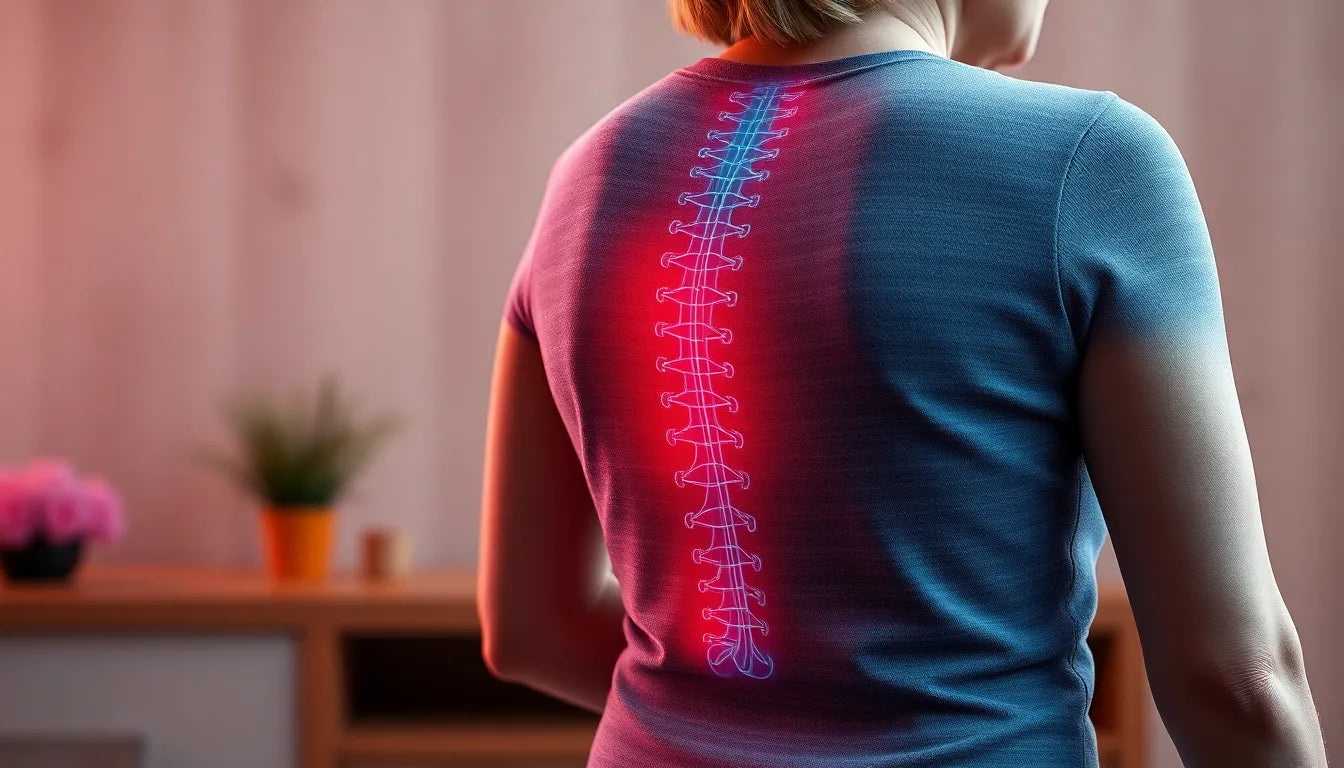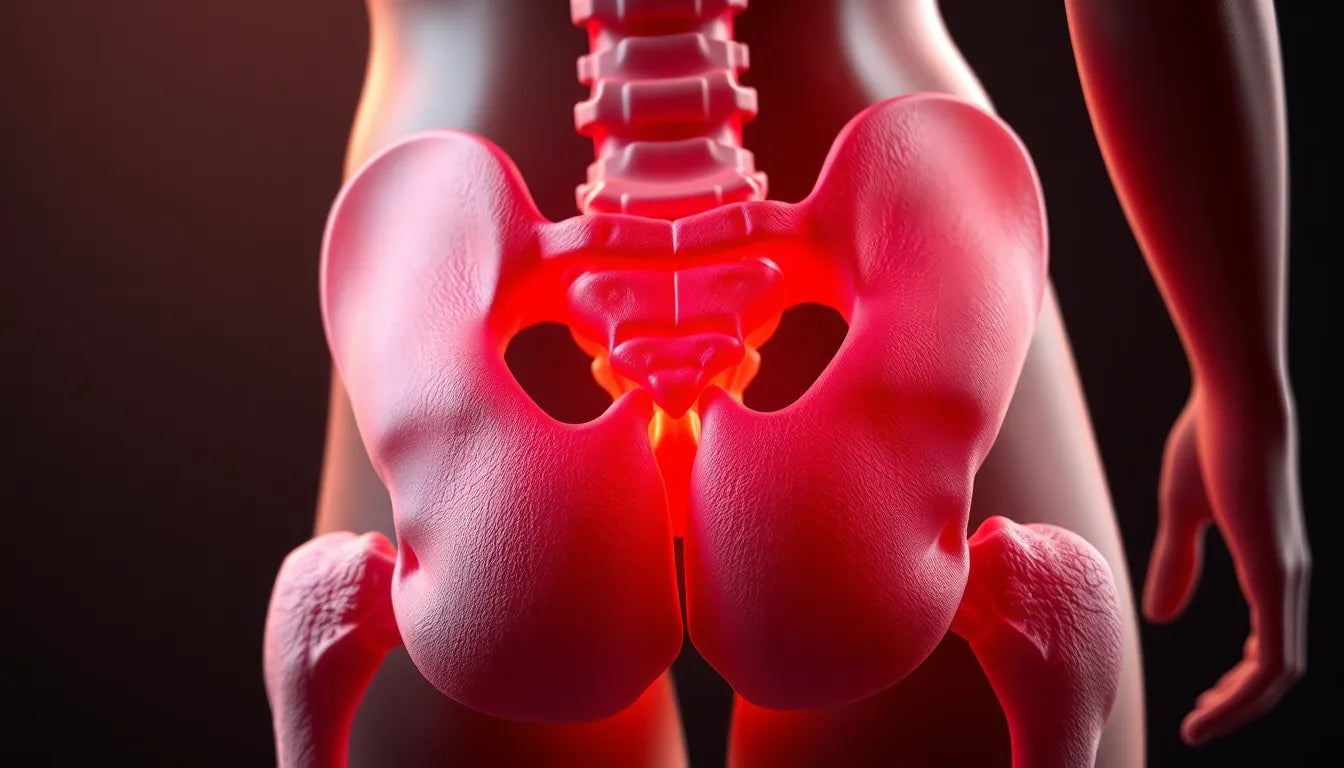The hip joint is a remarkable structure that plays a crucial role in our everyday lives, influencing everything from the way we walk and sit to how we perform in various sports. As one of the largest and most stable joints in the body, the hip is vital for maintaining balance and enabling smooth, coordinated movement. Understanding the intricacies of hip anatomy can provide valuable insights into improving movement efficiency and reducing the risk of pain and injury.
Understanding the hip as a ball-and-socket joint
At the core of hip anatomy is its design as a ball-and-socket joint, which is essential for both stability and mobility. This unique structure allows the hip to support the body's weight while providing a wide range of motion. The joint is formed by the head of the femur, which fits snugly into the acetabulum of the pelvis. This configuration enables movements such as flexion, extension, abduction, adduction, and internal and external rotation, making it possible to perform activities like walking, running, and jumping with ease.
By gaining a deeper understanding of hip anatomy, individuals can optimize their movements and enhance their overall physical performance. This knowledge is also instrumental in preventing injuries, as it allows for the identification of potential weaknesses or imbalances that could lead to strain or damage over time.
The role of hip anatomy in movement optimization
Recognizing the importance of hip anatomy is the first step towards optimizing movement and enhancing overall well-being. The complex interplay of bones, ligaments, and muscles within the hip joint contributes to its ability to function effectively under various conditions. Each component has a specific role, working in harmony to provide the necessary support and flexibility required for different activities.
For instance, the ligaments surrounding the hip joint, such as the iliofemoral, pubofemoral, and ischiofemoral ligaments, are crucial for maintaining stability and preventing excessive movements that could lead to injury. Meanwhile, the muscles, including the gluteus maximus, medius, and minimus, as well as the iliopsoas and adductor group, facilitate the diverse range of motions the hip can perform.
By understanding how these elements work together, individuals can better appreciate the importance of maintaining hip health and function. This knowledge can inform exercise routines, rehabilitation strategies, and ergonomic practices aimed at supporting the hip joint and enhancing its performance.
In conclusion, the hip joint's intricate anatomy is fundamental to our ability to move efficiently and comfortably. By exploring the secrets of hip anatomy, we can unlock new levels of movement potential and safeguard against injuries, ensuring that we remain active and healthy throughout our lives.
Exploring the basic structure and function of the hip joint
The hip joint's ball-and-socket design is integral to its function, allowing for a remarkable range of motion. This unique structure enables movements such as flexion, extension, abduction, adduction, and internal and external rotation. These movements are essential not only for everyday activities like walking and sitting but also for more dynamic actions such as running and jumping. The hip's dual role in providing both mobility and stability is crucial for maintaining balance and supporting the body's weight during these activities.
Understanding the bones involved in hip anatomy
The hip joint is formed where the femoral head of the femur fits into the acetabulum of the pelvis. The pelvis itself is composed of three bones: the ilium, ischium, and pubis. Together, these bones form the acetabulum, which serves as the socket part of the joint. This configuration not only supports the body's weight but also facilitates a wide range of dynamic movements. The robust design of the hip joint is essential for its ability to withstand the stresses of daily activities and high-impact sports.
The role of ligaments and the joint capsule
Ligaments play a critical role in stabilizing the hip joint. The iliofemoral ligament, often described as Y-shaped, is a major stabilizer that prevents hyperextension. The pubofemoral ligament limits over-abduction and extension, while the ischiofemoral ligament prevents excessive internal rotation and adduction. These ligaments work together to maintain joint stability and prevent dislocations. Additionally, the joint capsule, which is strongest in extension, provides further stability and protection to the hip joint.
Muscles and associated structures in hip movement
The muscles surrounding the hip joint are vital for its movement and stability. Major muscles include the gluteus maximus, gluteus medius, and gluteus minimus, which are essential for extension, abduction, and stabilization. The iliopsoas and the adductor group also play significant roles in hip flexion and adduction, respectively. Smaller muscles, such as the obturator externus, obturator internus, piriformis, and quadratus femoris, contribute to the fine-tuning of hip movements. Surrounding bursae, which are fluid-filled sacs, help reduce friction between these muscles and the hip bone, playing a crucial role in injury prevention and movement efficiency.
Clinical significance of hip anatomy
A thorough understanding of hip anatomy is essential for identifying and addressing common hip-related issues. Conditions such as bursitis, labral tears, and arthritis are often linked to specific anatomical structures within the hip joint. For instance, damage to the ligamentum teres, which carries vascular supply in youth, can lead to osteonecrosis if not addressed. By connecting anatomical details to potential pain points and dysfunctions, individuals can better understand the importance of maintaining hip health and function.
In conclusion, the intricate anatomy of the hip joint is fundamental to our ability to move efficiently and comfortably. By exploring the secrets of hip anatomy, we can unlock new levels of movement potential and safeguard against injuries, ensuring that we remain active and healthy throughout our lives.

Lumbar support belt
Adjustable lumbar belt for lower back pain relief and daily support.
joint mechanics and movement
The hip joint's sophisticated mechanics are integral to its ability to support a wide range of movements and weight-bearing activities. The ball-and-socket design allows the hip to perform flexion, extension, abduction, adduction, and rotation in multiple planes, which is essential for maintaining an upright posture and executing complex motions. This versatility is crucial for activities like walking, running, and jumping, where the hip must adapt quickly to changes in direction and force.
Understanding the mechanics of the hip joint can help individuals improve movement patterns and reduce the risk of injury. Proper alignment and coordination of the hip muscles and ligaments are vital for distributing forces evenly across the joint, preventing excessive wear and tear. This knowledge can be particularly beneficial for athletes and individuals engaged in physical rehabilitation, as it provides insights into optimizing performance and recovery.

Men's Posture Shirt™ - White
Patented top that helps improve posture and reduce back/neck pain.
clinical and practical relevance
Hip anatomy is not just a matter of academic interest; it has significant clinical and practical implications. For example, understanding the structure and function of the hip joint can help identify common pain points and ergonomic considerations. Conditions such as osteoarthritis, bursitis, and labral tears are often linked to specific anatomical features of the hip. Recognizing these connections can guide treatment and prevention strategies, ensuring better outcomes for individuals experiencing hip-related issues.
Moreover, the hip's role in maintaining posture and balance underscores its importance in ergonomic design. Proper seating and support can help maintain healthy hip alignment, reducing strain and discomfort during prolonged periods of sitting or standing. This is particularly relevant in workplace settings, where ergonomic interventions can enhance comfort and productivity.
visual aids and educational tools
To fully grasp the complexities of hip anatomy, visual aids such as diagrams and 3D models can be invaluable. These tools provide a detailed view of the bones, ligaments, and muscles involved in hip function, helping individuals visualize how these components interact. Educational resources that incorporate multimedia elements can enhance understanding and retention, making the information more accessible to a broad audience.
frequently asked questions
What is the most important ligament in the hip?
The iliofemoral ligament is often considered the most important ligament in the hip. It is a major stabilizer that prevents hyperextension, helping maintain joint integrity during movement.
Which muscles stabilize the hip joint?
The gluteus medius and minimus are key muscles that stabilize the hip joint, particularly during activities that require balance and lateral movement. Other stabilizing muscles include the iliopsoas and the adductor group.
How does hip anatomy affect movement?
The structure of the hip joint allows for a wide range of movements, including flexion, extension, and rotation. This flexibility supports diverse activities and impacts overall mobility by enabling efficient weight transfer and balance.
What are common issues related to hip anatomy?
Common issues include bursitis, labral tears, and arthritis. These conditions are often linked to specific anatomical structures within the hip joint, such as the bursae, labrum, and cartilage, and can lead to pain and reduced mobility if not addressed.
Kilder
- Same Day Hip and Knee Surgery. "Hip Health Information."
- Journal of Bone and Joint Surgery. "Understanding Hip Anatomy."
- Orthopedic Institute of North Texas. "Hip Education."
- Nature. "Scientific Reports on Hip Anatomy."
- Arthritis Foundation. "Anatomy of the Hip."
- NCBI. "Hip Joint Anatomy."
- NCBI. "Clinical Anatomy of the Hip."
- CenterWatch. "Hip Replacement Clinical Trials."
- MU Health Care. "Anatomy of the Hip."
- Dr. Michael Fleischman. "Hip Anatomy."
- TeachMeAnatomy. "Hip Joint Anatomy."
- WebMD. "Hip: What to Know."


















